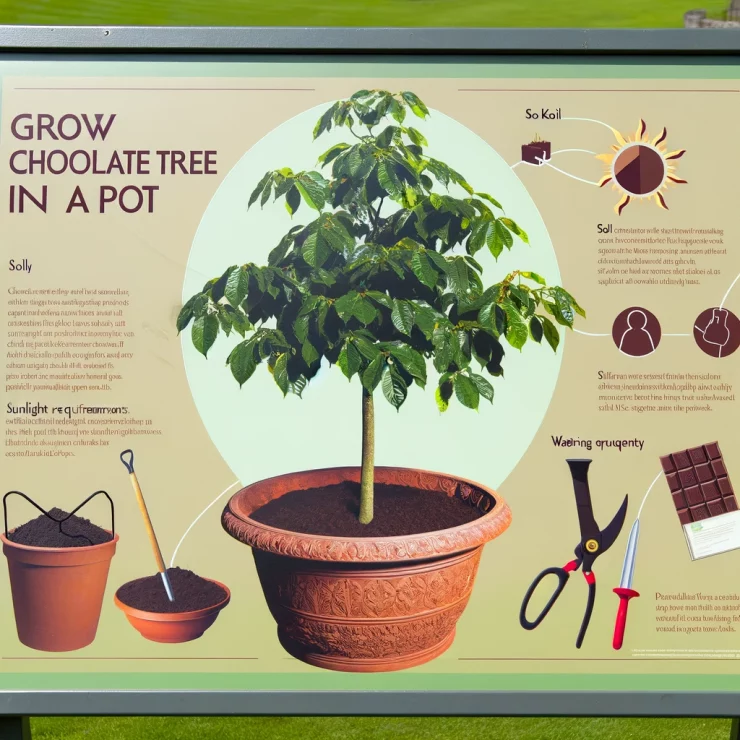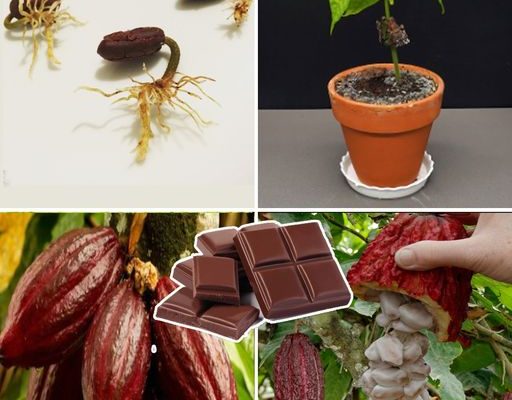
GARDENING
How to grow your own Chocolate Tree even in cold climates
Many of us dream of plucking ripe, luscious chocolate straight from the tree, but the notion is often dismissed as a tropical fantasy. However, with the right knowledge and techniques, cultivating your very own chocolate tree can become a reality, even in colder climates. This guide will delve into the essential steps and considerations for successfully growing your chocolate tree, regardless of your geographical location.
Understanding the Chocolate Tree:
The chocolate tree, scientifically known as Theobroma cacao, is native to the warm and humid regions of Central and South America. Traditionally, it thrives in tropical climates with consistent temperatures between 65°F to 90°F (18°C to 32°C) and high humidity levels. However, with proper care, it is possible to replicate these conditions in colder environments.
Choosing the Right Variety:
Selecting the appropriate variety of chocolate tree is crucial for success, especially in colder climates. Look for cultivars that are known for their cold hardiness, such as ‘Forastero’ or ‘Trinitario’ varieties. These varieties are more tolerant of cooler temperatures and are better suited for growth in non-tropical regions.
Creating the Ideal Environment:
While chocolate trees prefer warmth, they can adapt to colder climates with some modifications to their environment. Consider growing your tree in a greenhouse or conservatory to provide the necessary warmth and protection from frost during colder months. Alternatively, you can grow your tree indoors near a sunny window, ensuring it receives adequate sunlight and warmth.
Optimizing Soil and Drainage:
Chocolate trees thrive in well-draining, slightly acidic soil with a pH between 6.0 to 7.0. If your soil is not naturally acidic, you can amend it with organic matter such as compost or peat moss to achieve the desired pH level. Ensure proper drainage to prevent waterlogging, which can lead to root rot and other issues.
Providing Adequate Sunlight:
Sunlight is essential for the healthy growth of chocolate trees. Place your tree in a location where it will receive at least six hours of sunlight per day. In colder climates, this may require supplemental lighting, especially during the darker winter months. Consider using grow lights to ensure your tree receives sufficient light for photosynthesis and growth.
Maintaining Temperature and Humidity:
Maintaining consistent temperature and humidity levels is crucial for the well-being of your chocolate tree. In colder climates, use heaters or heat mats to keep the temperature within the optimal range for growth. Additionally, consider using a humidifier to increase humidity levels, especially during the dry winter months when indoor air tends to be drier.
Watering and Fertilizing:
Chocolate trees prefer moist but not waterlogged soil. Water your tree regularly, allowing the soil to dry slightly between watering sessions. During the growing season, fertilize your tree with a balanced fertilizer formulated for acid-loving plants. Be mindful not to over-fertilize, as this can damage the roots and hinder growth.
Protecting Against Pests and Diseases:
Like all plants, chocolate trees are susceptible to pests and diseases. Keep a close eye on your tree for signs of infestation or illness, such as yellowing leaves, unusual spots, or wilting. Use organic pest control methods whenever possible, and promptly treat any issues to prevent them from spreading.
Harvesting and Enjoying Your Chocolate:
With patience and care, your chocolate tree will eventually reward you with its delicious fruit – cacao pods. Harvest the pods when they turn from green to yellow or orange, indicating ripeness. Crack open the pods to reveal the cacao beans inside, which can be fermented, dried, roasted, and ground into chocolate. Enjoy the fruits of your labor by indulging in homemade chocolate treats straight from your own garden!
Growing your own chocolate tree, even in cold climates, is an achievable and rewarding endeavor with the right approach. By selecting cold-hardy varieties, creating a suitable environment, and providing proper care, you can enjoy the luxury of harvesting your very own chocolate right at home. So roll up your sleeves, gather your gardening tools, and embark on the delicious journey of cultivating your own chocolate tree today!



